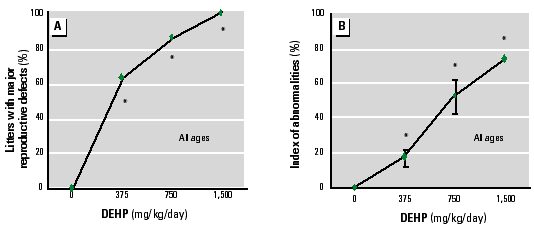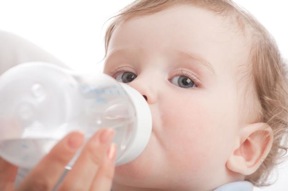
Blogroll Me!
Written by Jan Ludwig
"Coming after You" means both your legacy of non-biodegradable plastics and that they are out to kill you. Now that the hilarious double entendre is out of the way, we can go on to our patient heroines. The nurturing, brave journalists about to be presented are patient as heroines and they succor untold numbers of unknown patients suffering from plastic-caused diseases. For you hardy men who may not care about this girly-men stuff, and pride yourselves in being out to have a good time, keep in mind that erectile dysfunction is on the rise thanks to plastics.
Our problems keep multiplying when our beloved "free market" ensures that only a few chemicals out of thousands from industry get thoroughly tested and approved before being unleashed. Why and how? Politics is a game of corruption, so those with the most money get to win almost all the time. Therefore, if there are health risks from petrochemicals, radiation such as EMFs, and climate disruption, we victims are told by the corporate state to remain dutiful and grateful. Let the experts take care of everything, and have Hope.
And what's the big bother? Wake up each morning, have breakfast on the run, get to work (if you're employed), and ingest all the while the ubiquitous plastics that seem harmless. All day long between tasks we keep fantasizing about what we really want: freedom to hike in the mountains right this minute, visit with friends and family, indulge in sex and revelry, paint or compose a masterpiece, and not have to worry about sickness, financial pressures or violence either in one's face or the wars we fund.
One can't easily deal with multiple onslaughts and play the survival game as modern consumers or dispossessed peasants, so most people do nothing about threats. After all, to take action is to go up against bureaucracy backed by the police and military. So the common people are forced to wait until they begin to starve before snapping and going on a rampage.
Since we don't know exactly when the bubble of global trade and the precarious petroleum-based food system will collapse, it is fortunate that a few brave activists, artists and journalists keep calling our attention to the destruction of life. By now most everyone has heard of the massive plastic garbage patches in the oceans. The ramifications are as little explored as measures considered to cease the discharge. Remedies are available on all levels if we open our eyes and start communicating. But we must be willing to turn our backs on much of what we've been conditioned to believe: the supreme and righteous power of technology, that governments represent the common people, and that the world we inherited will automatically be here for our descendants.
Two reporters have laid out before us all we need to know about the plastic plague's insidious invasion of our bodies, in two articles highlighted below. Steve Mosko and Amy Graff, of southern California and the San Francisco Bay area, respectively, have provided alarming statistics and valuable insight. We have increasing amounts of deadly plastics molecules in each of us, and industry makes sure this continues. As to the solutions, these reporters/researchers leave it to the individual: get the poison products out of your home, and pressure the politicians to do the right things.
But when Coca Cola and industry lobbies are scheming behind closed doors to destroy our health and torpedo legislation, as happened last year in California where bisphenol-A (BPA) was about to be banned in baby products, we are thwarted in the land of democracy. We have found out that it's really a democracy for the rich, as the recent Supreme Court decision endorsing corporate funding of elections revealed. This takes us back to my initial point: politics is a game of corruption. So the mission of progressive and radical journalism and activism is crucial: to lay out a course that recognizes the failure of modern society to cease devouring its own members. Until it ceases, enshrined in law and false tradition -- like Coca Cola advertisements confused with art -- is the Red-White-and-Blue enrichment of the blind elite fouling their own nests as well as our bodies.
Fight the plastic plague:
(1) Pressure your local and state representatives in government to ban the plastics described below, along with large retail outlets' distribution of free plastic petroleum bags.Steve Mosko alerts us to three extreme threats that most of us ignore:(2) Boycott corporations such as Coca Cola that rely on trashing the planet and our health for corporate profits. Boycott petroleum to the extent possible.
(3) Talk to friends and family members about getting plastics out of their diet.
(4) Learn about the shortcomings of recycling plastic and so-called bioplastics. Better to shut down the use of plastics than to fall into the trap of picking some plastics to be alright.
(5) Donate to nonprofit groups such as Algalita Marine Research Foundation which produced the award-winning documentary "Our Synthetic Sea."
(6) Go on a fast to remove plastics from your cells.
Perfluorinated Compounds (PFCs)
These are in non-stick cookware and grease/water-resistant packaging (e.g. for fast foods). Ninety-eight percent of blood samples have been found to contain PFCs such as PFOA and PFOS. Breast milk contaminated with PFOA and PFOS was detected in 98% of Massachusetts women participating in a 2004 study.
The list of potential health effects linked to PFCs in human and animals studies is long and includes cancers, high cholesterol, liver and developmental toxicity, thyroid hormone disruption, and infertility.
No U.S. jurisdiction has yet limited the used of PFOA or PFOS in food-contact substances. Until then, cut way back on your "take out" meals and get yourself an iron pan and steel pot for your cooking.
Brominated Flame Retardants
Polybrominated diphenyl ethers (PBDEs) are a family of flame retardants in widespread use in consumer products, including plastics for electronics and electrical devices.
PBDEs were found in nearly 100% of blood samples in a major 2003-2004 survey. Consumption of meat, fish and dairy products is thought to be a primary route of exposure.
However, it was the discovery of infant exposure to PBDEs via rising levels in human breast milk in the United States and Europe that set off a chorus of alarm about health risks to humans.
PBDEs have been marketed in the United States in three commercial mixtures, so-called penta, octa and deca formulations. Animal data link penta and octa to serious health impairments – including liver, thyroid & reproductive toxicity and especially developmental neurotoxicity.

Bisphenol-A, phthalates, and more
Hundreds of recent studies connect BPA to a diversity of problems like early puberty, miscarriage, breast and prostate cancer, obesity, diabetes, heart disease, cardiac arrhythmias and male erectile dysfunction. Harmful effects in lab animals are seen at exposure levels far below what the EPA has considered safe.
Birth defects among affluent Americans are getting more common, in part from BPA which is in almost everyone's urine. It is ironic that the main crisis in birth defects today is in Fallujah, where U.S. militarism inflicted such death and destruction that fully 25% of babies born have serious birth defects. The U.S. citizen obliviously paying taxes for such war might ask "Why do birth defects have to happen to us peaceful consumers? Perhaps Obama gives hope in solving this, too."

Endocrine disruptors can be synthetic estrogen or other substances from plastics or pesticides, accounting for feminization of fish populations, for example. Phthalates, the softeners in plastics, and chemicals in hairspray account for a big rise in the shrinking of anal-genital distance in newborn boys -- a feminization. In a lab rat study in 2001, "[E]xposure to the most prevalent phthalate ester, di(2-ethylhexyl) phthalate (DEHP), on male reproductive system development and sexual behavior" showed "Dose-related effects on male offspring included reduced anogenital distance, areola and nipple retention, undescended testes, and permanently incomplete preputial separation." (see chart)

The European Union's banning of phthalates is progress, but the extent of the problem is endless. PVC, perhaps the most poisonous of plastics, is still out of control everywhere. These concessions to the warnings of science hint at a shocking reality that may be looming: human extinction, from one cause or another, or a combination. It's harder and harder to limit the discussion anymore.

Effort to ban BPA in California fails
In February 2009, a bill was introduced to ban BPA from infant formula cans and baby bottles and cups. In September that bill failed to pass in the Assembly. Why?
In The Mommy Files, a local mom's take on raising kids by the Bay, Amy Graff wrote in the San Francisco Chronicle on Sept. 16 2009:
You know those thin heat-sensitive receipts you get everyday? BPA, baby. The warning is that one should not handle food after touching these receipts.A recent Canadian study found that many bottles claiming to be BPA free aren't.
In May, chemical and food industry lobbyists called an emergency brainstorming session to devise an attack plan to kill SB 797 and similar bills pending around the country.
Meeting behind doors at the exclusive Cosmos Club in Washington D.C., representatives from Coca-cola, Alcoa, Del Monte, Crown, the American Chemistry Council, the North American Metal Packaging Alliance, and the Grocery Manufacturers Association discussed a public relations effort to prolong the life of BPA.
A copy of the meeting minutes leaked to the Milwaukee Journal Sentinel revealed that the attendees discussed tactics to kill BPA legislation in California.
A September 2008 study in the Journal of the American Medical Association found that higher levels of urinary BPA is associated with cardiovascular disease, diabetes and liver-enzyme abnormalities.
Serving Plastics for Dinner?
Unhealthy and avoidable
by Sarah (Steve) Mosko, Ph.D.
What do breast milk, food cans, microwave popcorn, and fast-food French fry boxes have in common with meat, fish and dairy products? They’re all avenues of human ingestion of potentially harmful chemicals associated with everyday plastics.
Although the jury is still out on what levels of exposure are unsafe, it is indisputable that we are all literally consuming chemicals from plastics daily.
Biomonitoring projects – like the 2005 BodyBurden study of cord blood in neonates and the Mind, Disrupted investigation of blood and urine in adults representing the learning & developmental disabilities community just published in February 2010 – consistently find neurotoxic and endocrine-disrupting chemicals used in common plastics among the substances routinely tainting human tissues. Although diet is not the only route of exposure, it is considered a major one.
Given that developing fetuses and young children are most vulnerable to environmental toxins, understanding how exposure occurs through ordinary diets, and how to avoid it, has become a growing societal concern.
Three constituents of common plastics that find their way into food or drinks are described below, all linked to ill health effects in humans and lab animals. In the Mind, Disrupted study, the subjects universally tested positive for all three: bisphenol-A, brominated flame retardants, and perfluorinated compounds. The variety of avenues into the human diet is surprising.
Bisphenol-A
Originally synthesized a century ago as a synthetic estrogen, bisphenol-A (BPA) was utilized instead to make baby bottles, reusable water bottles, and food storage containers upon discovery that polymerization produced clear, shatter-proof plastics dubbed polycarbonates. It’s also a key ingredient of the epoxy resin that lines metal food cans and jar lids, including infant formula.
Over 90% of Americans have BPA in their urine, according to the 2003–2004 National Health and Nutrition Examination Survey (NHANES) of the U.S. population. Young children generally have the highest levels because they lack an enzyme that breaks down BPA. Leaching of BPA from containers into food and beverages is thought to be the main route of exposure.
The U.S. Environmental Protection Agency (EPA) set a now outdated safe exposure standard of >
Responding to the newer findings, the National Toxicology Program Center for the Evaluation of Risks to Human Reproduction released a monograph in Sept 2008 admitting “some concern” that current levels of exposure in fetuses, infants and children may result in developmental changes in the brain, prostate and behavior. In January 2010, the U.S. Food and Drug Administration posted its “support” for voluntary moves by industry to both stop selling BPA-containing baby bottles and feeding cups and develop alternatives to BPA-lined infant formula cans; however, it stopped short of recommending bans on BPA or that parents change use of infant formula or foods.
Only Connecticut, Minnesota and Wisconsin have passed laws banning BPA in children’s foodware and drinkware.
Brominated Flame Retardants
Polybrominated diphenyl ethers (PBDEs) are a family of flame retardants in widespread use in consumer products, including plastics for electronics and electrical devices. Because PBDEs are not permanently bonded to the plastic polymers, they migrate out into the environment.
Properties of PBDEs include resistance to biodegradation and affinity for fats, allowing them to persist in the environment and bioaccumulate in the food web. PBDEs were found in nearly 100% of blood samples in the 2003-2004 NHANES survey. Consumption of meat, fish and dairy products is thought to be a primary route of exposure.
However, it was the discovery of infant exposure to PBDEs via rising levels in human breast milk in the United States and Europe that set off a chorus of alarm about health risks to humans.
PBDEs have been marketed in the United States in three commercial mixtures, so-called penta, octa and deca formulations. Because of animal data linking penta and octa to serious health impairments – including liver, thyroid & reproductive toxicity and especially developmental neurotoxicity – domestic manufacture of penta and octa was voluntarily phased out in 2004. However, levels of penta and octa in humans continue to rise, attributable in part to widespread use of deca which can break down into other forms.
In December 2009, the EPA outlined an Action Plan to reduce human exposure to PBDEs which recommended only a voluntary phase out of deca in lieu of a federal restriction. California is among 11 states that have enacted bans on penta and octa.
However, even public health-advocacy organizations that support phase-out of all PBDEs, like Environmental Working Group, do not recommend that parents stop breastfeeding because of breastfeeding’s positive impact on other measures of infant well-being.
Perfluorinated Compounds
Perfluorinated Compounds (PFCs) are synthetic polymers that find their way into food applications because they repel oils and water. They are the key ingredient of grease/water-resistant coatings on non-stick cookware (e.g. Teflon®), pizza boxes, microwave popcorn, and fast-food wrappers. The most studied PFCs are PFOA (perfluorooctanoate) and PFOS (perfluorooctanesulfonate) which are known to persist seemingly indefinitely once released into the environment and consequently build up in the food web. They also persist in human tissues: The half-life of PFOA and PFOS in human blood is roughly 4-5 years, according to a 2007 study of retirees of a PFC manufacturing facility.
Ninety-eight percent of the blood samples in the 2003-2004 NHANES survey contained PFOA and PFOS. Breast milk contaminated with PFOA and PFOS was detected in 98% of Massachusetts women participating in a 2004 study. Dietary intake of meat, fish and dairy products is thought to be a major route of exposure along with consumption of foods contaminated through contact with grease/water-resistant packaging (e.g. fast foods).
Non-stick cookware, when heated to high temperatures, has also been shown to release substances that might taint foods, according to tests performed by Environmental Working Group.
The list of potential health effects linked to PFCs in human and animals studies is long and includes cancers, high cholesterol, liver and developmental toxicity, thyroid hormone disruption, and infertility.
No U.S. jurisdiction has yet limited the used of PFOA or PFOS in food contact substances.
Summaries of research on the health effects of chemicals from plastics and other industrial products can be read in the full Mind, Disrupted report.
* * * * *

The above report, "Serving plastics for dinner? Unhealthy and avoidable" by Sarah (Steve) Mosko, Ph.D. is from her website BoogieGreen.com
Further reading and viewing:
The Mommy Files, by Amy Graff, San Francisco Chronicle, September 16, 2009
Effort to ban BPA in California fails
Get "Our Synthetic Seas" DVD from Algalita Marine Research Foundation
Captain Charles Moore on Colbert Report!

TOXIC: Garbage Island: a CNN documentary on a Algalita's Captain Moore heading up a sail into the Pacific Garbage Patch
Waves of disaster - why lantern fish eating tons of our polymer garbage, mistaken for zooplankton, is a disaster. By Roberta Staley, in a Vancouver, Canada publication
Materials: Controversy Brewing Over PVC in Toys, by Jean M. Hoffman, April 24, 2008
Cut down on plastic bags you collect from the supermarket, and have ready poop baggies for your poochie on walks: get reusable satchels from 4U2ReUse
See many reports from Culture Change on the Plastics Plague.
The curse of Fallujah: Women warned not to have babies because of rise in birth defects since U.S. assault, by Mail Foreign Service, 5th March 2010
No comments:
Post a Comment
If you care to comment: